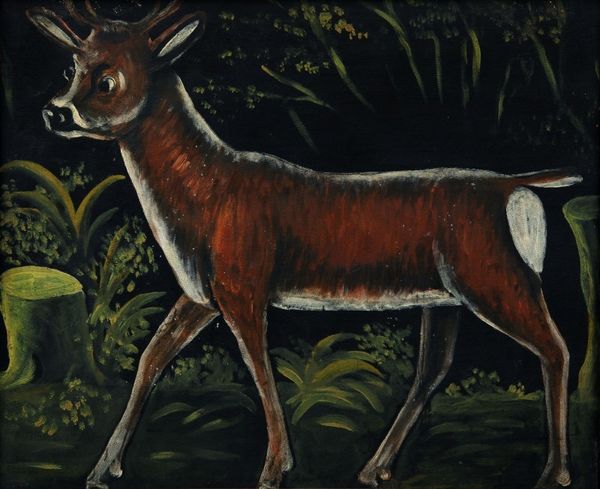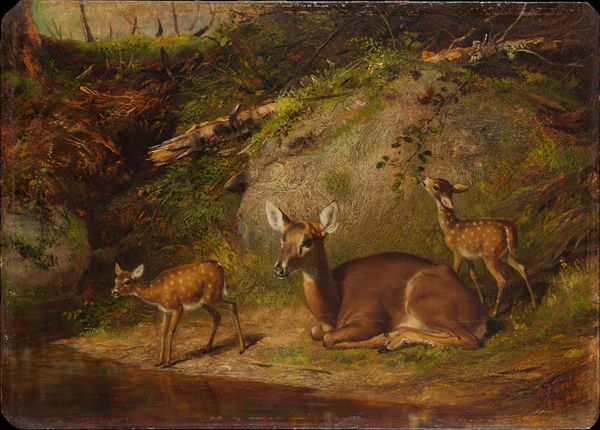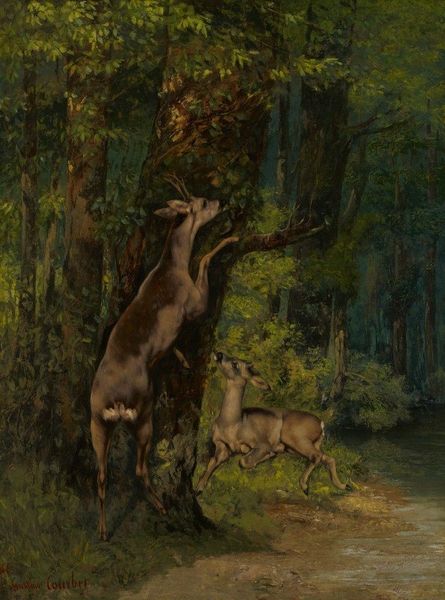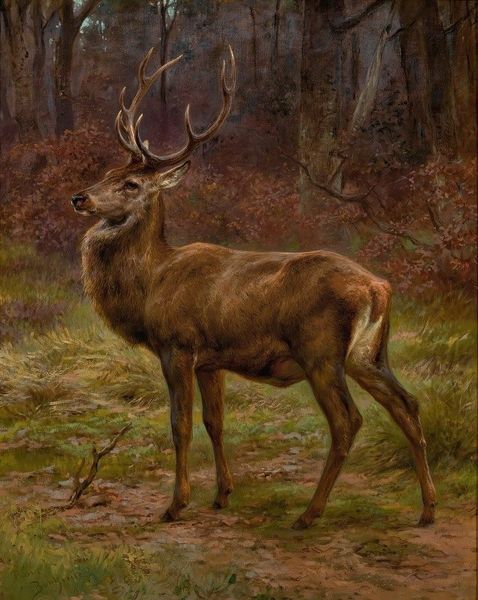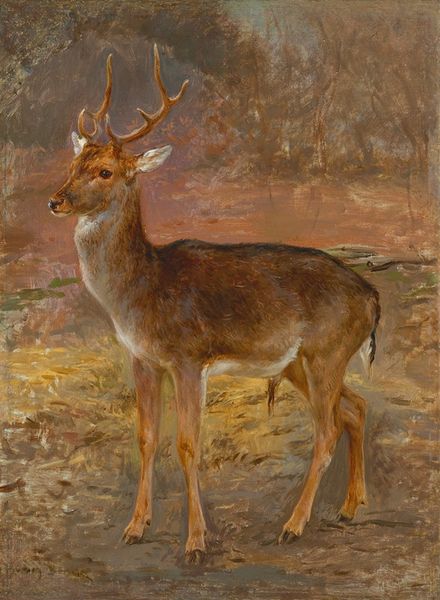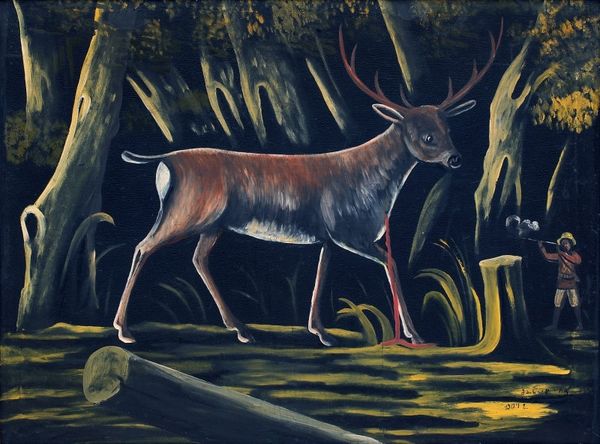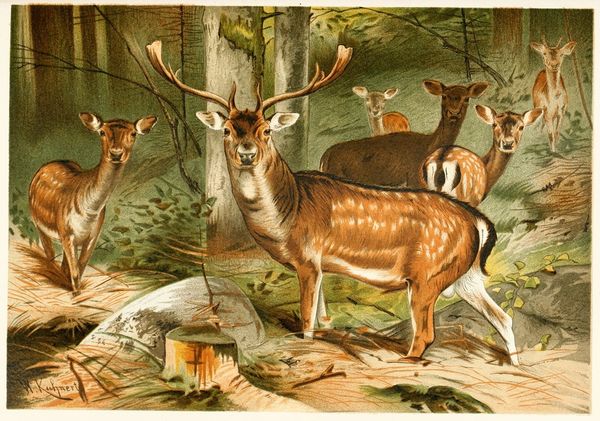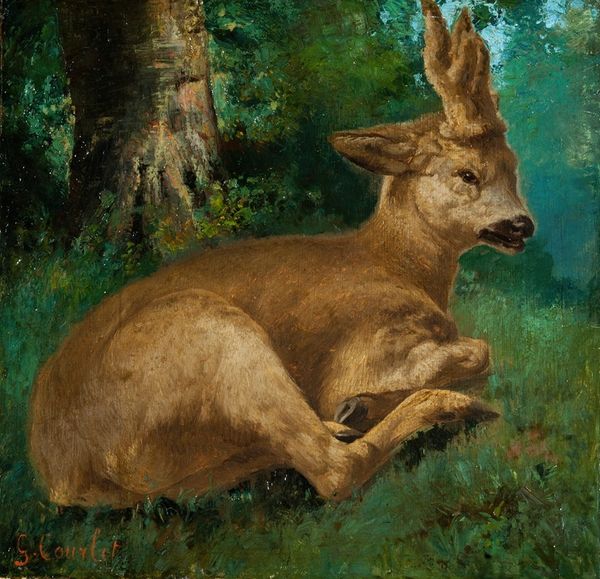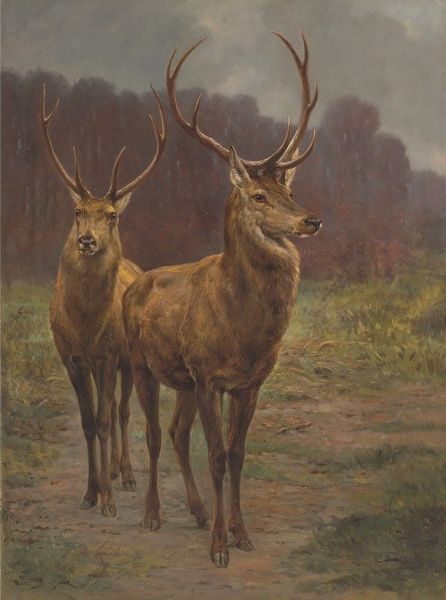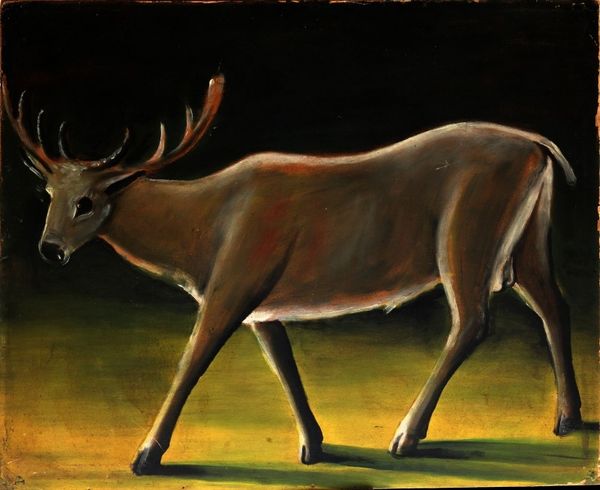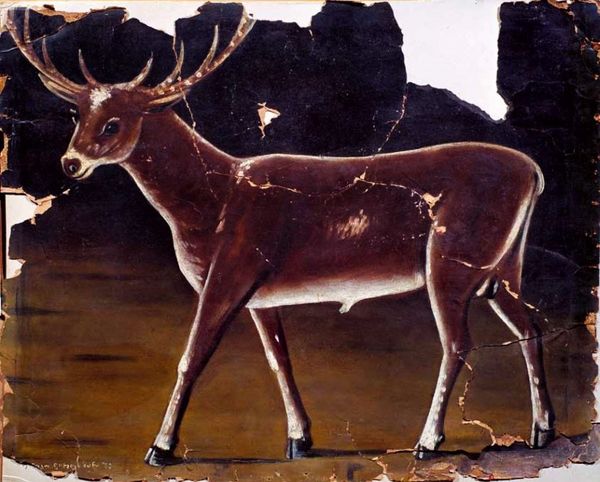
Copyright: Public Domain: Artvee
Curator: Just look at how the light dapples through the trees onto the forest floor in "Deer at the Edge of the Forest." Rosa Bonheur completed it in 1863. It's an oil painting depicting two deer in their natural habitat. What are your first thoughts? Editor: It's undeniably charming, there’s almost a stillness. But is it not also sentimental, presenting perhaps an idealised view of nature that conveniently ignores the brutal realities of the wild? Curator: That's a valid point. We must remember the social context of the time; Bonheur was working amidst growing industrialization. Perhaps the romantic depiction was a way to emphasize what was at risk of being lost. And, we mustn’t forget her rebellious nature; she acquired police permits to wear men’s clothing so she could freely sketch animals in the fields. That, in itself, was quite the statement! Editor: Absolutely. Thinking about that rebellious stance adds a new dimension. Maybe these weren't just pretty pictures, but quiet assertions of female agency in a male-dominated art world? By focusing on the natural world, she circumvented societal expectations while subverting them. Curator: Precisely! Bonheur challenged artistic conventions, too. Academic painting often relegated animals to secondary roles, but here they are front and centre, almost monumental in their presence. Editor: It feels radical when considering how male artists were getting recognition and institutional commissions by documenting and staging the hunt for example; here nature has agency outside the thrill of human exploits, there's also a sensitivity towards an experience of landscape often removed from official records, experiences perhaps linked with a certain gender and class. Curator: What I also appreciate is the sheer realism, achieved through her technical skill in rendering fur and musculature. This commitment to detail sets her apart. Editor: And this approach makes me reflect on how we classify artists and their relationship to art history, and to this end, "Deer at the Edge of the Forest", reminds us that paintings—landscapes or not—often reflect both personal convictions and shifting socio-political tides. Curator: Indeed. Thank you for revealing those hidden dimensions that makes Bonheur's contribution that much more noteworthy! Editor: Thanks for your insightful take, I shall consider that during our next discussion.
Comments
No comments
Be the first to comment and join the conversation on the ultimate creative platform.
